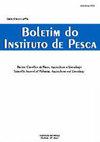多学科方法识别渔业系统在亚马逊水库:个案研究tucuruÍ水坝
IF 0.6
4区 农林科学
Q4 FISHERIES
引用次数: 0
摘要
水坝造成了环境结构和当地捕鱼方式的深刻变化。这些影响的一个例子是位于巴西北部帕尔本文章由计算机程序翻译,如有差异,请以英文原文为准。
MULTIDISCIPLINARY APPROACH TO IDENTIFICATION OF FISHERY SYSTEMS IN AMAZONIAN RESERVOIR: CASE STUDY IN TUCURUÍ DAM
Dams cause profound changes in the structure of environments and local fishing practices. One example of these impacts is the Tucuruí dam, in the southeast of the state of Pará, in northern Brazil. The changes were gradual, but eventually established unique fishery systems and capture techniques that were consolidated over time. The present study used a rapid analysis technique based on the Métier principle to identify 14 fishing systems with distinct characteristics, although a more holistic approach (dimensions: economic, social, technological, and management), supported the identification of four clearly distinguishable groups. From the management perspective, studies of this type are important because they permit the establishment of more effective practices based on the deficiencies found in the different systems or their respective groups.
求助全文
通过发布文献求助,成功后即可免费获取论文全文。
去求助
来源期刊

Boletim do Instituto de Pesca
FISHERIES-ZOOLOGY
CiteScore
0.80
自引率
0.00%
发文量
24
审稿时长
>12 weeks
期刊介绍:
To publish original articles of research and short communications in the following áreas: Fisheries, Aquaculture, Zootechnology, Limnology, Oceanography, Biology and Pathology of aquatic organisms. The publication depends on the approval of the Editorial Board, based on the peer review.
 求助内容:
求助内容: 应助结果提醒方式:
应助结果提醒方式:


